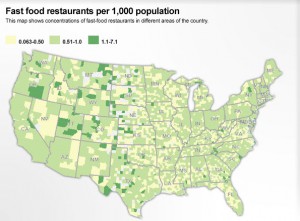Food-based strategies are essential to tackle malnutrition and help vulnerable populations cope with environmental change. Genetic modification, crop diversification and soil management can improve access to vital micronutrients.
More research is needed to identify nutritious crop varieties and analyse indigenous and wild species for their nutritional content. In particular, maintaining genetic diversity within home gardens and local agroecosystems can help improve nutrition.
Music to our ears, of course, but the tune goes back to 2002. Odd — and slightly disappointing — that SciDev.Net could find nothing more up to date on this subject for their recent nutrition blitz. Anyway, good to have the agrobiodiversity song played, however old.
Another piece in the SciDev.Net feature looks at the human genetics dimension of the problem. We’ve talked about that here before. You don’t just need to understand how micronutrient content, say, varies among crops and crop varieties, but, as if that wasn’t enough, also how people vary in their ability to make use of these compounds.

